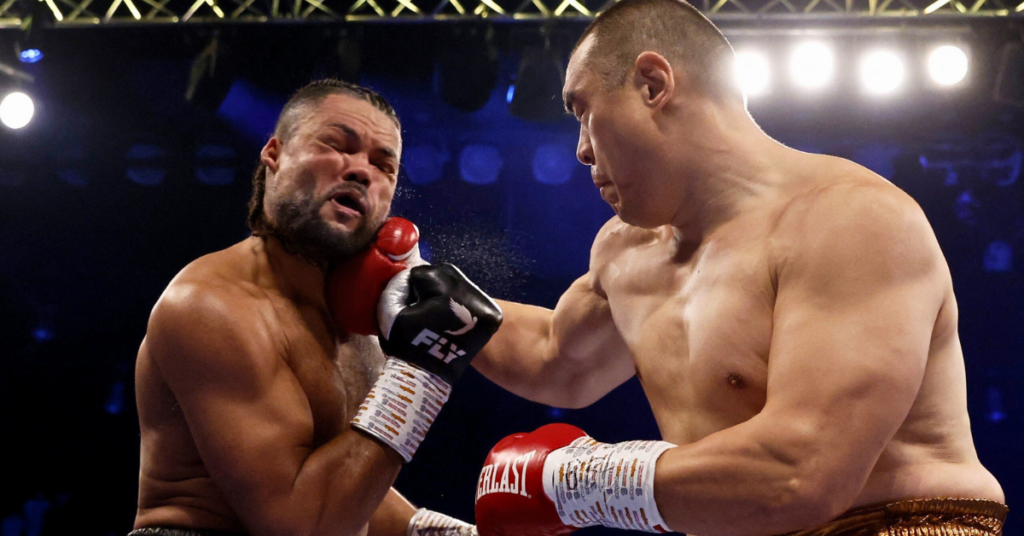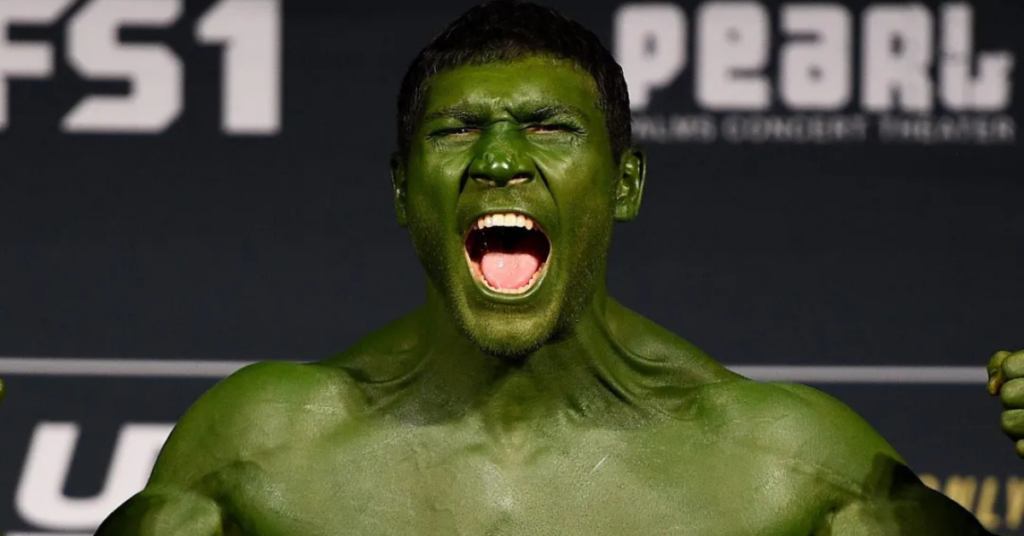BJJ Purple Belt: A Full Breakdown
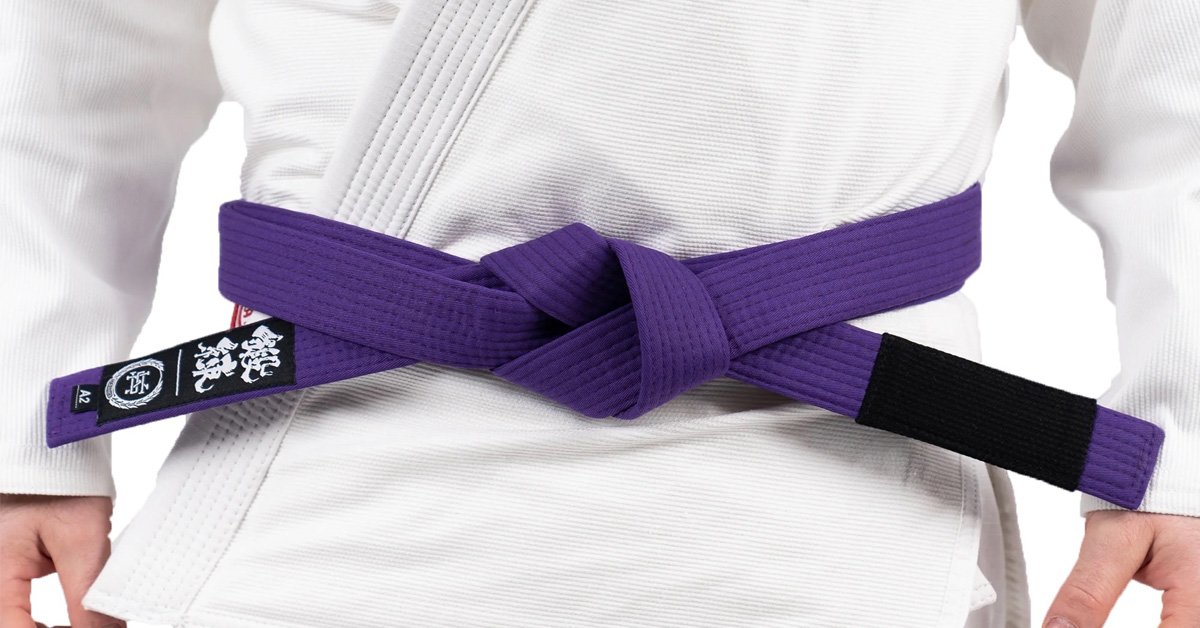
Earning a BJJ purple is quite an accomplishment. It takes years of work to earn this rank and many new grapplers ask what it takes to earn this belt.
Here is a full breakdown of what you need to know about the BJJ purple belt rank. Read below to learn everything you need to know about this rank and how to earn it.
What Is The BJJ Purple Belt?
The BJJ purple is the 3rd of the 5 adult colored belt ranks in Brazilian Jiu-Jitsu. For Jiu-Jitsu practitioners, the purple belt is a transitional rank in terms of a beginner moving towards being advanced.
Purple belts are technically good at many aspects, but need to work on a few things before earning their brown belts.
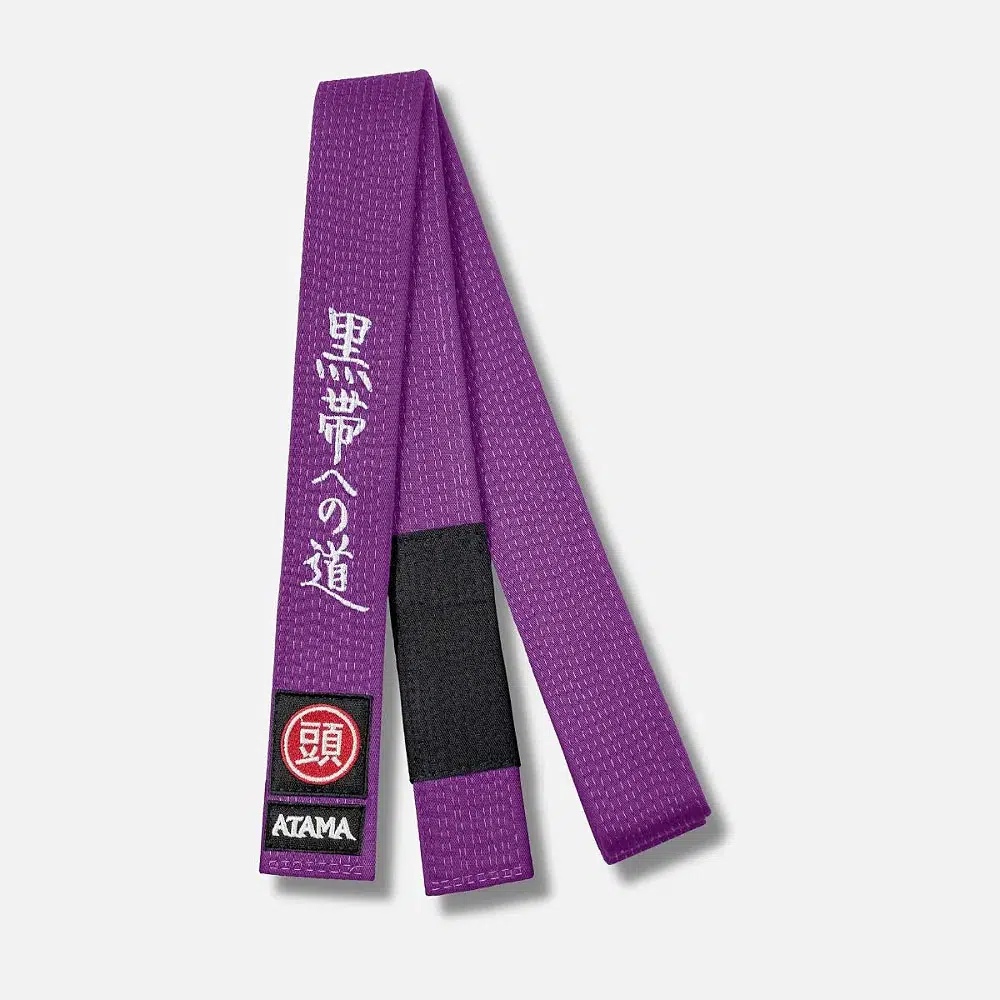
How Long Does It Take To Earn A BJJ Purple Belt?
The time frame for earning a BJJ purple belt is between 2 to 4 years. Two years for dedicated students and 3 to 4 years for students that are more or less hobbyists.
It’s one of the longest waits in between belt promotions, which makes earning the rank quite a feat. The majority of BJJ blue belts will statistically quit, but the ones remaining will get their purple belts.
Must Know Techniques For BJJ Purple Belts
Just like at blue belt, the purple belt rank requires a student to know quite a few different techniques. Far more vast than the requirements were for the blue belt ranks.
Some Jiu Jitsu academies will do belt tests to test their would-be promoted students, while other schools just list requirements. Here is an example of what a BJJ purple belt must know below.
Mount
- +2 Or More Mount Escapes
- +2 Or More Mount Entries
- Americana/Keylock
- +2 Arm Locks
- Kimura
- Triangle
- +2 Gi Chokes
Back Mount
- +2 Or More Back Mount Escapes
- +2 Or More Back Mount Entries
- +3 Back Mount Submissions(Gi Chokes Included)
Guard Sweeps
- +3 Open Guard Sweeps
- +2 Butterfly Guard Sweeps
- +2 Spider Guard Sweeps
- +2 Lasso Guard Sweeps
- +2 De La Riva Sweeps
- +2 X Guard Sweeps
Guard Submissions
- Arm Lock(s)
- Americana(Keylock)
- Guillotine
- Kimura
- Triangle Choke
- Omoplata
- +3 Gi Chokes
(A purple belt must also know how to do each of these submissions from different guards.)
Half Guard/Quarter Guard
- + 2 Half Guard/Quarter Guard Passes
- +2 Half Guard Sweeps
- +2 Half Guard To Back Mount Back Entries
Side-Control/Side-Mount
- +3 Types Of Side-Control/Mount
- +3 Side-Control/Mount Submissions
Throws & Takedowns
- +2 Double Leg Variations
- +2 Single Leg Variations
- +2 Single Leg To Double Leg & Vice-Versa
- Ouchi Gari
- Osoto Gari
- Uchi Mata
- O Goshi Kata Guruma
- Seoi Nage Ippon
- Tai Otoshi
- Double Leg Defense
- Single Leg Defense
- Throw & Sweep Defense
Leg Attacks & Leg Defense
- Ankle Lock
- Toe Hold
- Kneebar
- Defenses Against All 3
Why Is Getting A BJJ Purple Belt Difficult?
As we mentioned in the article on the BJJ blue belt, getting a purple belt is difficult to achieve Blue belts go through what is referred to as “the blue belt blues,”
This is the rank where a predominant number of BJJ students quit training Jiu-Jitsu. There are a lot of reasons for this mass exodus of blue belts from the martial art.
Here are the two predominant reasons:
- Prolonged Time Between Promotions
- Stagnation

Prolonged Time Between Promotions
The time between earning a blue belt and purple belt is one of the longest waits for a BJJ student. Double or more the time it took to earn a blue belt, which can affect a blue belt student mentally.
During this prolonged period, a student may either lose confidence or interest in the martial art. This is why you see a lot of blue belts quit before they earn their purple belt.
Stagnation
During the blue belt phase, it’s common for BJJ students to see their game stagnate. It feels like their game isn’t progressing and they’re just stuck in an endless cycle of losing.
Nothing they try seems to work and they keep getting hit with the same submissions. This period of stagnation can be difficult to get through, which is why many students don’t earn their purple belts.
Tips For Earning Your BJJ Purple Belt
A BJJ purple belt is one of the most difficult ranks to earn in Jiu-Jitsu. Here are three tips to remember for earning a purple belt.
- Keep Training
- Don’t Worry About The Time
- Train Smart
Keep Training
The only real advice that we can give blue belts pursuing their purple belts is to keep training. Consistency is the only way that anyone gets better at everything.
Don’t worry about winning or losing in training and just keep showing up every week.
Don’t Worry About The Time
Don’t think about the time it’s going to take to earn a purple belt. Instead, just keep focusing on developing your skills and improving every week. If you do this, you’ll be a purple belt before you know it.
Train Smart
It’s going to be a couple years before you get your purple belt, so remember to train smart. Don’t go hard 100% and learn when to pull back, so that you don’t get injured and have to take time off.
Would Competing Help Earn Your BJJ Purple Belt?
Consistently competing in BJJ tournaments will definitely help a blue belt earn their purple belt. Competition is a great way to simultaneously test your skills and improve them.
They are a great indicator of where your skill is at and shows what you need to work on. Test the waters and try to compete a few times at blue belt to see where you’re at skill wise.
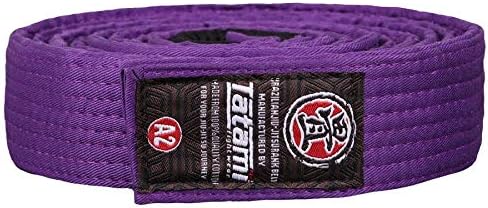
What Should Your Focus Be At The BJJ Purple Belt Rank?
If you’re able to earn the purple belt rank, this is when the real work begins. At this rank, you should be particularly focused on doing two things.
- Expand Your BJJ Game
- Be A Good Teammate
- Stay Positive
Expand Your BJJ Game
As a purple belt, you’re right in the middle of the BJJ ranks transitioning from a beginner to an advanced student. At this stage of your development in Jiu Jitsu, your primary focus should be expanding your game.
You probably have a go to move set you used as a blue belt that you always use. The bad news is that move set is only going to get you so far.
As a purple belt, you have to evolve as a grappler and add more tools to your arsenal. For example, if you’re more of a guard player, you should take the time to develop your wrestling skills.
By developing respectable wrestling skills, your BJJ game will be more balanced. Becoming a dual threat in top positions and in your guard.
Be A Good Teammate
During your evolution into an advanced student comes with more responsibility. This means that you have to become a better teammate to the lower level students.
Your professor will encourage you to help out newer students just like your purple belt teammates did before you. By helping out your teammates you learn to become a better teammate.
Learning this is an invaluable trait, which not only benefits you, but your Jiu-Jitsu gym. Everyone helps each other and all of your teammates benefit from it.
Stay Positive
At purple belt, the grind of training can wear away at you mentally, especially if you feel that you’re not progressing. Just like at blue belt, purple belts do go through mental hardships.
If you feel like your game isn’t getting better and that you should just give up and quit. Every grappler that has gone through the purple belt rank feeling this way.
The best thing you can do is stay positive and know that it’ll get better. Just stay positive and keep grinding.
What’s The Value Of A BJJ Purple Belt?
The BJJ purple belt is a special rank that represents that you put in years of work to earn it. It shows that you’re passionate about Jiu-Jitsu and love the training.
Earning this rank is a big deal and shows that you put in the work to achieve it. By getting to this rank, you learn the value of hard work.
Remember the important lessons you learn at this rank as your progress to the brown and black belt ranks.

